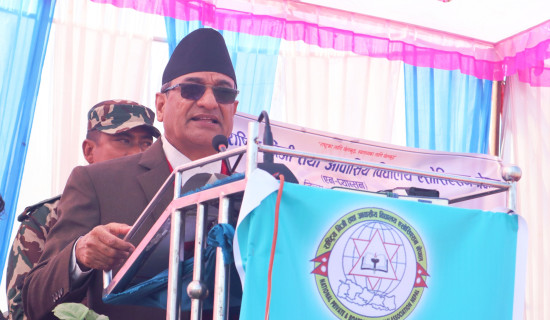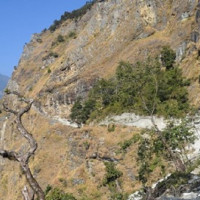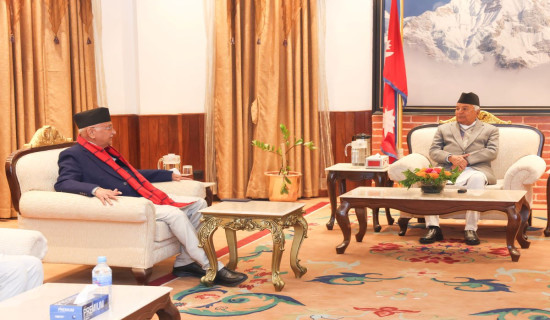- Friday, 10 January 2025
Human encroachment shrinking Sarlahi wetlands
By Our Correspondent,Sarlahi, FEB. 6: The wetlands in the Sarlahi district are shrinking due to human encroachment and pollution.
The wetlands in the Sarlahi district which play a vital for improving water quality, maintaining surface water flow during dry seasons and providing habitat for aquatic species, and wildlife, are gradually diminishing due to increasing encroachment and human intervention.
Conservation experts express concerns about the increasingly deteriorating condition of wetlands and their surroundings. Wetlands, whether natural or human-made such as ponds, lakes, reservoirs, streams, and rivers, are considered essential to the ecosystem.
According to data from the Division Forest Office in Sarlahi, the district has 1,406 hectares of wetland areas in the form of streams and 422 hectares of ponds and lakes.
However, the construction of the Bagmati Machha Pokhari (Bharat Taal) in 121 bighas of land within Bagmati Municipality has not been included in these figures. Most of the streams in the district, including Barhathwa, are now mostly used for irrigation and domestic purposes.
Other streams dry up quickly except during the rainy season. Assistant Forest Officer Sajan Chaudhary of the Division Forest Office in Sarlahi expressed concern about the deteriorating condition of the wetlands in the district.
He added that several wetland areas, which were once sources of perennial water and habitat for various aquatic species, are now under threat due to encroachment and various other problems. “The majority of wetlands are now under the jurisdiction of local authorities, and it's the responsibility of municipalities to protect them,” said Chaudhary.
However, the challenge of conservation is increasing as wetland degradation is on the rise. He expressed concern about encroachment and human interference in wetland areas. Issues such as road construction, building various structures, drying up natural ponds for fish farming and increasing conflicts between humans and wildlife have been observed.
Chandranagar, located within Chandranagar Rural Municipality, which is a major wetland area in the district, has been drying up at a rapid speed. Increased human intervention in wetland areas has affected various species of aquatic plants and animals.
Rohit Poudel, a resident and journalist of Lalbandi Municipality-7, said that the local authorities have been constructing various physical structures including roads near the wetland areas which has led to the shrinking of the wetlands.





-square-thumb.jpg)











